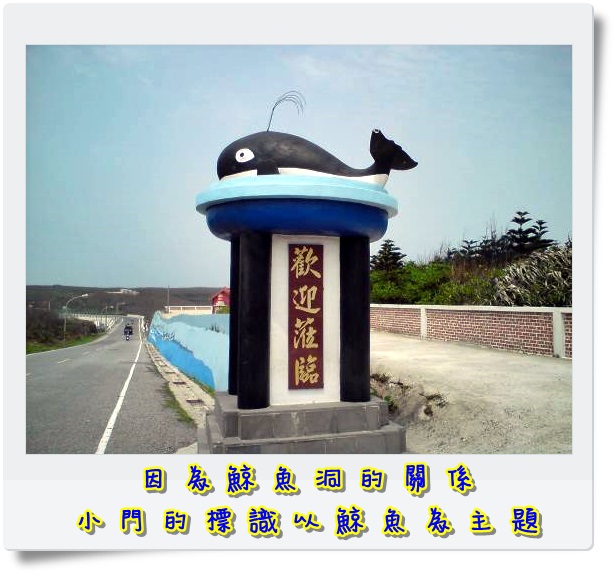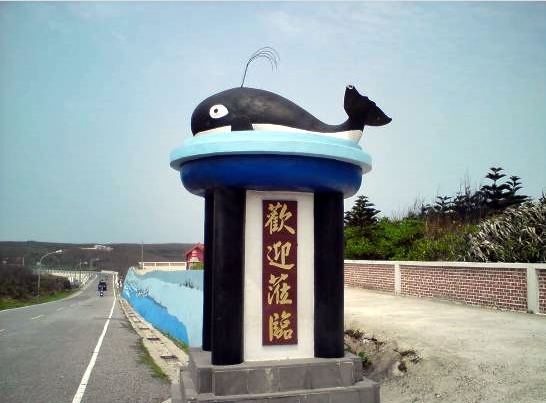Local community

A path at the east side of Xiaomen Village leads to an opening between basalt cliffs, which looks like a gateway with side walls leading to the village. In the old times, this path was the main access for residents of the village, and people began to call this village Xiaomen Village and the island Xiaomenyu (small gate island).
LocationXiaomenyu is located north of Xiyu (Fisherman Island) with a dimension of 0.5121 km2. North of the island is higher than the south, and the highest place is in the northwest. Xiaomen Bridge is where to connect to the outside world.
Economic Activities1. Fishery
The fishing method in summer is mainly bale, and large vessels often accompany the catching of flying fish eggs near Nanfangao or Keelung Badouzi. In winter, drift fishing is adopted to catch Spanish Mackerel, and all the aquatic products are shipped to Magong for selling.
2. Agriculture
Mainly planting peanut, sweet potato, cabbage, Chiapao melon, melon, and dragon fruit.
1. Religion
Most of the residents believe in Taoism. The largest temple in Xiaomen Village is the Zhenyi Temple. The main god is Wen Fu Wang Ye. In addition, there is another temple called Fude Temple on the top of hill of Xiaomen Ciaotou.
2. Folk Culture
(1) God Pilgrimage Activity: It is held by Zhenyi Temple every year on 15th February and also on Wen Fu Wang Ye’s birthday, 14th June on the lunar calendar.
(2) Jhongyuan General Salvation Ceremonies: On the 13th day of the seventh lunar month.
1. Xiaomen Geology Gallery (Xiaomen Geological Exploration Hall)
Penghu is composed of lava from volcano fissure eruption and before becoming the beautiful, spectacular, and at the same time precious geological landscape it experienced years and years of wind, rain, and wave erosion. If you would like to observe the various landscapes in Penghu, then Xiaomen Geology Gallery is your best choice.
The Xiaomen Geology Gallery was established in the Xiaomenyu Geopark. The theses of this gallery are the Penghu's unique geology and topography. The gallery's exhibition floor is divided into 8 zones, including the Introduction of Xiaomenyu, Penghu Island's Landscape Landforms, Xiaomenyu's Landscape Model, Rock Exhibition, Specimen Exhibition, Xiaomenyu's Ecology, Marine Ecology and Culture Exhibition.
(After renovation in July 2020, the museum will reopen at the end of January 2021 and will be renamed the Xiaomen Geological Exploration Hall, bringing a prehistoric look to the geology and creating an audio-visual and club venue. Change from eight regions to six regions.)
2. Whale Cave
It sits on the northwest coast of Xiaomenyu. The black columnar basalt formed a huge hole due to sea erosion, and it looks like a giant whale that is stranded on the beach.
3. Xiaomenyu’s Beehive Farmland
There are unique “beehive farmlands” near the gullied land. The stone walls of these beehive farmlands are built to withstand the strong northeastern monsoon, so these farmlands are windproof to grow through the winter.
1. Cactus:There are ice cream, juice and jelly made from cactus.
2. Dry Squid:Food vendors are selling dry squid everywhere in the village when it is the fishing season of squid.
Traffic Information:1. Motorcycle/Car: From Magong City, take county highway 203, turn left at Dongwei, pass Baisha Township, cross the Penghu Great Bridge, turn right at about 26km of county highway 203, continue to pick up the Penghu local road 2 to arrive the destination.
2. Bus information: Take Waian Line passing Xiaomenyu to get to Xiaomenyu Station. Timetable - Blue line - Waian Line
3. Taiwan - The Heart of Asia: Timetable - Magong Shuttle Bus North Ring Line

